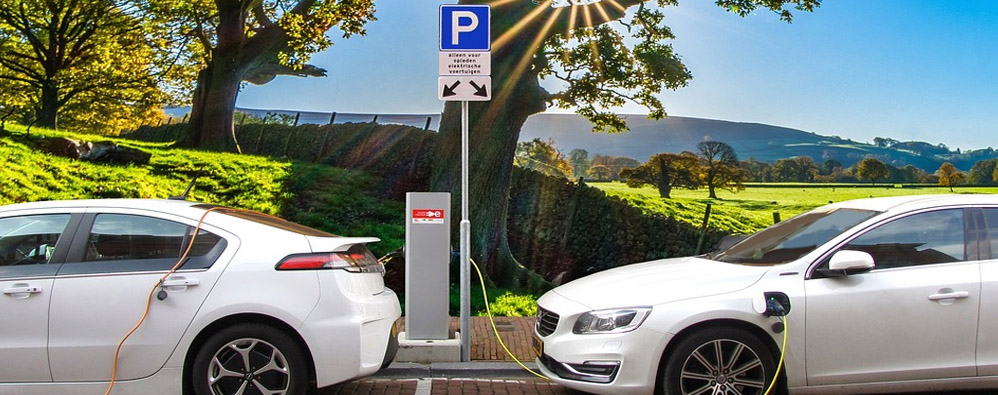India is one of the largest car markets in the world but that market is on the brink of a transformation. The Government of India is promoting electric mobility in a big way and the Department of Science and Technology (DST) is working towards technological solutions through R&D efforts with industry and R&D laboratories to realize the electric dream of 400 million customers by the year 2030.The Program would cover two important aspects: 1. Charging Infrastructure 2. Electric Vehicle R&D.

Charging Infrastructure
One of the major hurdles in the uptake and adoptions of electric mobility is availability of charging infrastructure. Development of suitable EV Charging Stations and appropriate standards for charging different vehicle categories (2/3 Wheeler, Cars, Buses and Trucks) is crucial.
In this context, DST is supporting industry-academia collaborations to develop indigenous low cost technologies like chargers for light Electric Vehicles (2/3 Wheelers), lighter cars, Buses and Trucks. In order to make charging facilities accessible, the government is setting up charging facilities in all parking lots, public place/ offices. These parking lots are termed as EV-Bays, wherein the customer will book the parking slot and then connected for charging point which is installed at each parking space. This would drastically reduce fast charging requirements. Smart pole is another innovative concept for charging electric vehicles, which has been implemented in countries like france. Government is also thinking in similar directions to see such innovations may be implemented in the country
In parallel, the Bureau of Indian Standards (BIS) and DST are working together on indigenous charging standards that will help customers, charger manufacturers, OEMS, DISCOMS and policy makers. The Indian Standards are developed based on IEC standards with minor modifications ( voltage and tropical conditions etc..) to suit to Indian requirements and will follow international communication protocols both Japanese (CHAdeMo), European standards (CCS) for DC Charging.
Electric Vehicle R&D Program
The transformation of mobility is being carried out on mission mode. It aims to achieve a long term shift to the use of electricity in transportation, and away from petroleum fuel. It is coordinated by NITI Aayog and comprise of half dozen major mechanisms led by Ministries. There is a common goal to shift to ‘shared, connected, electric’ mobility and coherent synergy, in the actions.
In order to contribute to the mission mode programme, earlier DST had conducted a series of stakeholder discussions on EV R&D Program, monitored the EV Charging Standards Program at BIS and participated in the deliberations under the Faster Adoption and Manufacture of Hybrid and Electric Vehicles (FAME) and Phased Manufacturing Programme Mission to identify the scope and potential for undertaking R&D Program.
It is also holding workshops, to finalize the detailed R&D plan. These ‘project development meetings’ with invited participation are aimed at prioritizing activities, seeking commitment of participation from the stakeholders, and assessing the resource requirements, perceived risks and expected benefit/ outcome etc.
A workshop was organized last year with 50 participants from industry & academia and three areas were selected for focused research and development. These included technologies for Rare Earth Permanent Magnet Motors Supply Chain, Energy Storage Systems which are temperature tolerant and Control & Power Electronics Devices.
Leapfrogging to electric mobility can help India move towards its Paris Agreement commitment of reducing carbon emission intensity (emission per unit of GDP) by 33 to 35 per cent of 2005 level over 15 years. The country can save 64% of anticipated passenger road-based mobility-related energy demand and 37% of carbon emissions in 2030 by pursuing a shared, electric, and connected mobility future. This would result in a reduction of 156 Mtoe (Million Tonnes of Oil Equivalent) in diesel and petrol consumption for that year.
In addition to reducing energy demand, this transformation yields other benefits, including lower congestion as shared, public, and nonmotorized modes of transportation serve an increasing share of mobility demand.
Besides, it can create an entirely new market for digital and information technology-based applications starting with charging location finders, online charging reservation platforms, IoT infrastructure for multiple cars and battery components to communicate with infrastructure, smart grid technologies, online payment platforms, autonomous driving and ride sharing.
A larger share of the fleet running on electricity, will lead to lower local emissions, and improvement of public health. This has significant implications for India’s electricity sector and economy, supporting India’s ambitious renewable energy goals while saving money, providing jobs, and strengthening Indian industry.
Electric mobility promises huge environmental, energy and societal benefits. But with present state of the technology and the resulting accessibility of the electric mobility system, incentives are required for it to compete with conventional automobiles. It is expected that technological interventions can absolve the need for both industry and consumer incentives in future.






























